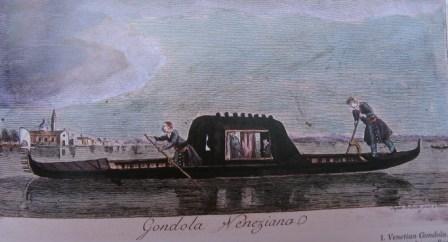
Last Friday an unfortunate event occurred which not only did not shed honor on the worshipful order of gondoliers, it did way, way the opposite, and then some.
The two gondoliers involved have not only been suspended for five days till the jury decides whether to suspend them for three months (“You are so grounded!!”), but three sopping American tourists have been hauled out of the canal, and I think most of their personal effects have been recovered by the fire department divers.
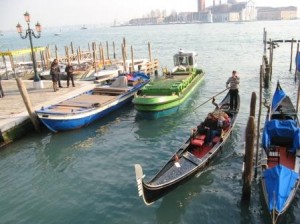
In the early afternoon of the aforementioned Friday, two gondoliers based at the stazio near Piazzale Roma came to blows. I have to say that having heard their location, what followed didn’t come as a total surprise, seeing as the gondoliers here generally are not of the type you can imagine drinking tea with their pinkies extended. It is also fairly evident that conflict between the two men had already been on a low boil for some time now.
Gondolier A was boarding three Americans for a gondola ride. To do this, the gondolier ties his boats to some slim pilings next to a wooden platform with descending steps, and helps the passengers aboard.
Gondolier B approached and, seeing that the embarkation point was occupied and that the people were taking too long (in his opinion) to get aboard, was seized by a fury that impelled him to leap off his boat without even tying it up, and head straight for Gondolier A. The enraged bellowing, threats, imprecations, etc. that flew between the both of them did not need subtitles or any other form of translation; the Americans, seeing an ugly fight approaching, got scared and all stood up together to get off the boat immediately.
Sudden simultaneous movements, which involve weight as well as motion, especially all concentrated on the lower starboard side of a flat-bottomed gondola, are Not Good. The tourists know that now, because suddenly all three were in the drink and one was at least momentarily sort of stuck under the capsized gondola. This is Extremely Not Good.
Happily, at that moment a motor launch was passing, carrying some firemen back to the firehouse. Firemen here are almost always involved in nautical rescues, so they got right to it. People saved, boat righted, sunken objects (including a video camera) eventually retrieved. Gondolier A gets to washing and drying the boat, and peace — or the opposite of rage, anyway — descends.
Needless to say, the Ente Gondola (the gondoliers’ organization) is now taking steps, which will be determined after all the meetings have concluded.
An isolated incident between two men who haven’t had their rabies shots? Not quite, it seems. Because the scene now shifts to Sunday morning (two days later), at the Rialto area.
A batch of us had rowed over from the Lido, as we like to do on Sunday mornings, and had tied up our eight-oar gondola to the platform at the Erbaria, an open sort of small square facing the Grand Canal.
Being a popular tourist area, the Rialto is a place where some gondoliers tie up to await potential clients. Even to entice passersby to become clients. But not today. Enticement was not in the air.
The young gondolier kneeling on the stern wiping down his boat with a chamois cloth suddenly started to roar at a passing tourist who had stopped to make some snaps of him at work. “I’m not paid to be photographed,” the gondolier yelled, using plenty of vulgar phraseology and making some threatening motions that implied he might be ready to come ashore to demonstrate how much he meant it.
The tourist fled. We stood there, aghast. Lino was outraged.
“The gondola and the tourist are a gondolier’s bread,” he said. “If there’s one thing a gondolier depends on, it’s tourists. This shows that not only is he incredibly rude, he’s even willing to shoot himself in the foot.”
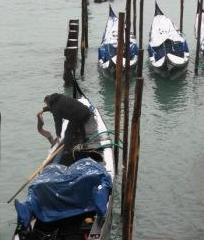
Lino wasn’t shouting or gesticulating but I think he was angrier than the gondolier. Because the gondolier was merely responding to some random neural firing somewhere in the limbic system of his brain, whereas Lino felt offended as a Venetian on behalf not only of the gondoliers who aren’t insane, but the image of the city as a whole. It’s painful to him to think that people go away with an idea of his city as a place where you take your life (and your wallet) in your hands.
Let’s see if these two events turn out to have been merely some bizarre coincidence and we can all go back to sleep. Otherwise, I don’t know whether it makes more sense to approach a gondolier wearing a life vest or a bullet-proof jacket.

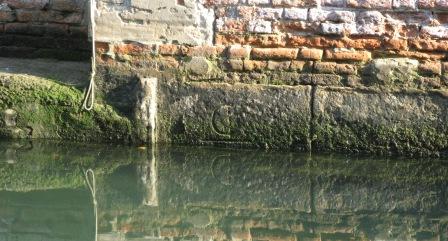
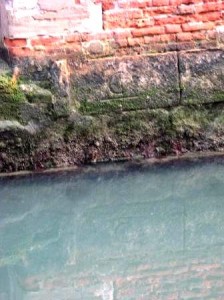
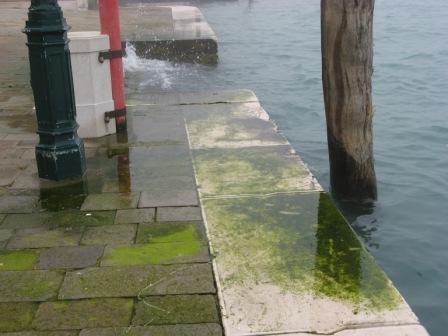


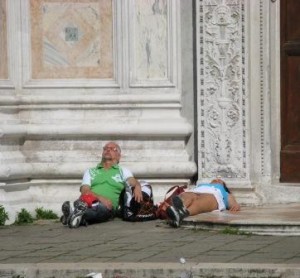

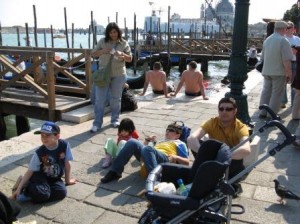
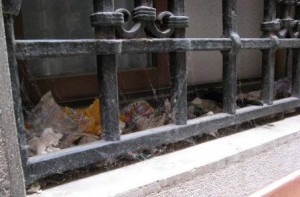
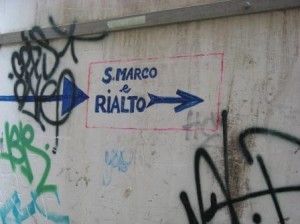 Street vendors — insistent and vaguely disturbing. Which leads to Point Two.
Street vendors — insistent and vaguely disturbing. Which leads to Point Two.